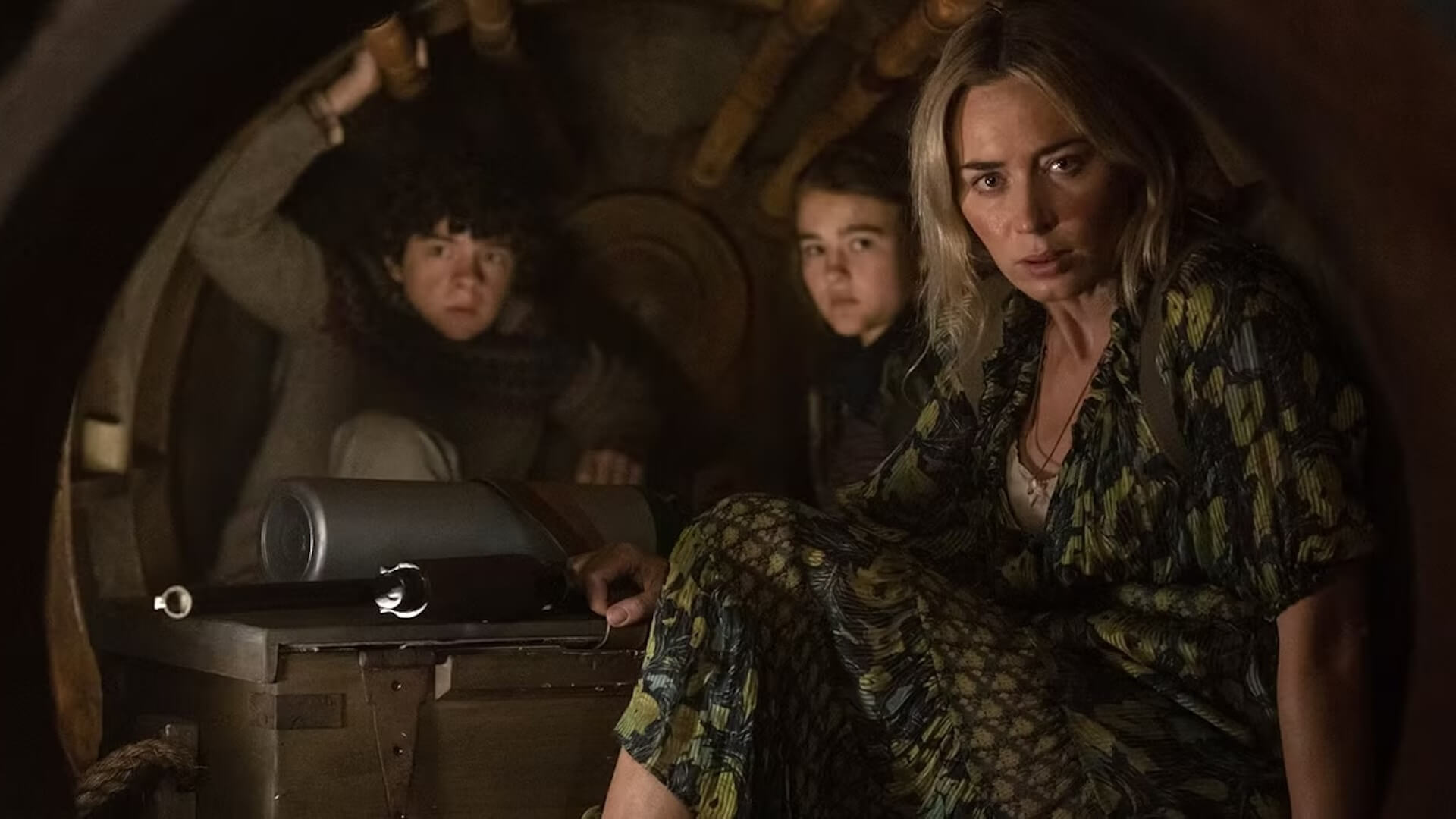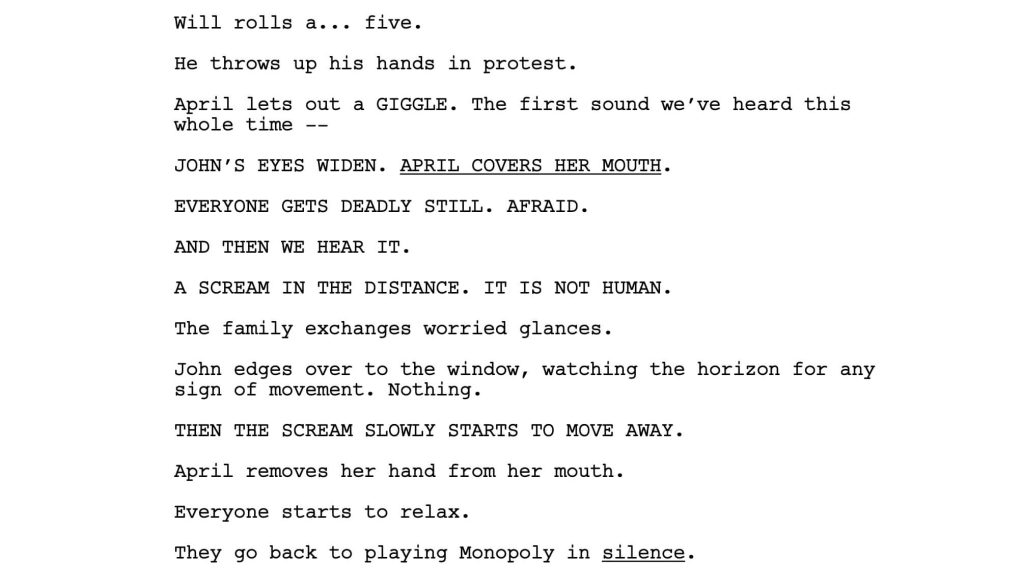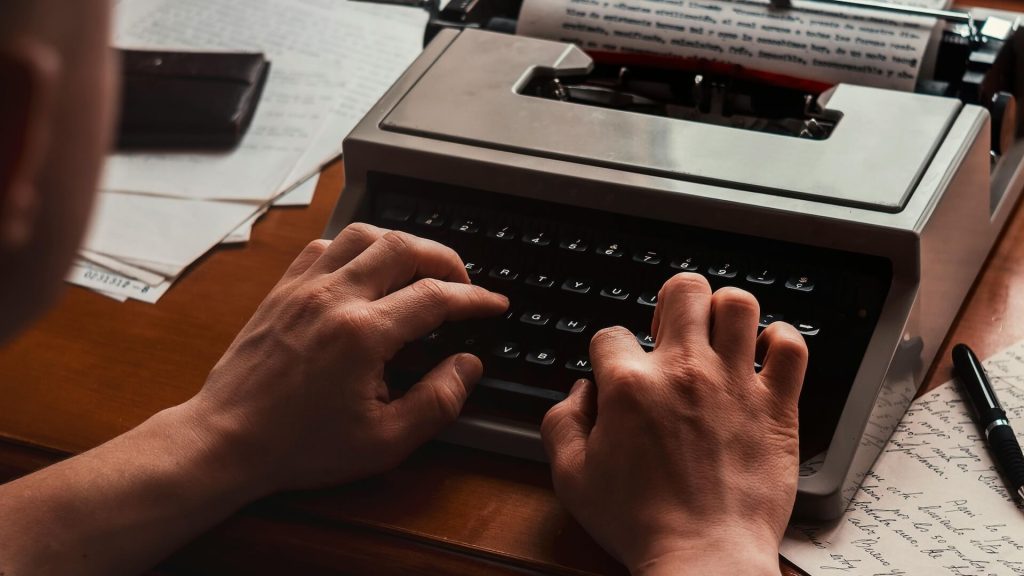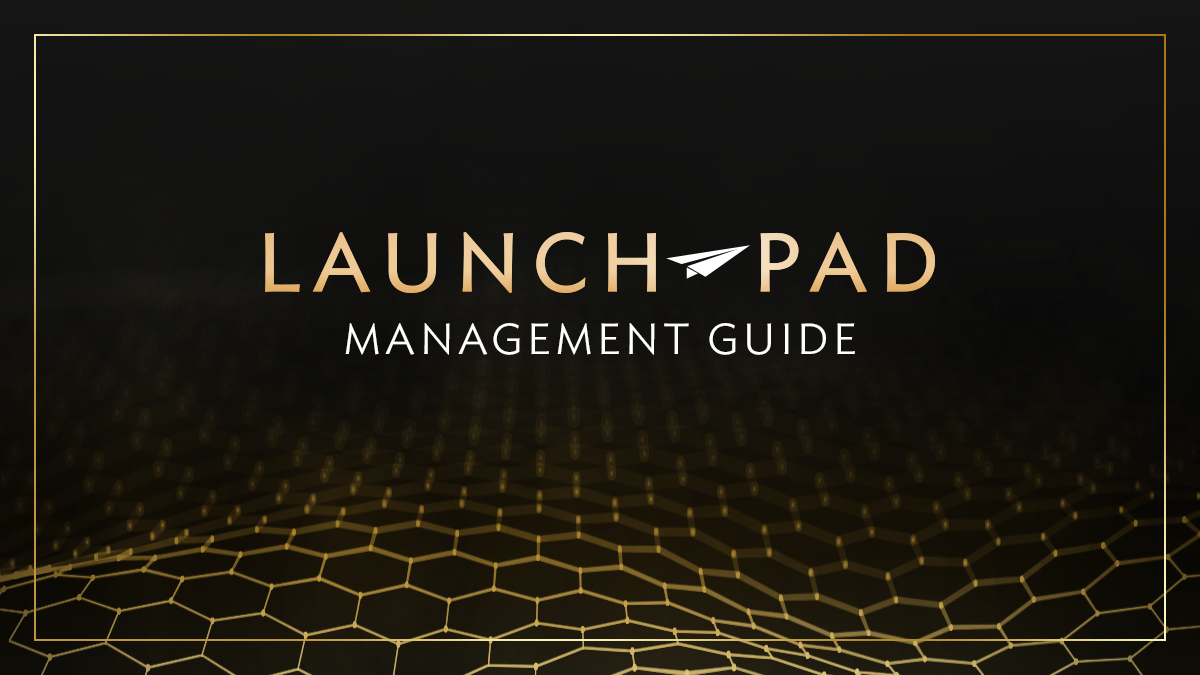
You may have heard that a script is a “blueprint” for a film. It’s an accurate way to look at your craft on the page, to ensure that you’re writing in a way that’s visual on the page and creates a framework for a director’s vision. But that can be so dry!
For some, looking at screenplays as a blueprint makes sense, it’s even part of why they became a screenwriter and not a novelist. But at the same time, you might want to play and be more creative with your art form. And yet, screenplays don’t have the space for long prose and reactions so internalized that they may read like poetry but it won’t show up on screen.
If this feels like you and your writing struggles, you should try vertical screenwriting.

What Is Vertical Screenwriting?
“Vertical screenwriting” is a newer term for when a screenplay’s prose is shorter and more spaced out vertically down the page. This wouldn’t apply to dialogue-heavy scripts, which might look more “vertical” but they make your script page count higher, which can throw off the pacing for a reader.
A vertical script uses fewer words in the action directions to make an impact and control the tension on the page. It can make your page count lower. It also adds to the visuals and tone of a script so the story doesn’t feel thin on the page.
Scripts are meant to be read vertically if you think about it. I’m not saying your eye moves up and down the page. But, whereas a novel or short story forces the reader to slow down while their eye moves horizontally and absorbs everything, a screenplay is spaced out in a way that allows the eye to move down the page quickly.
Using vertical screenwriting simply amplifies the format to the writer’s advantage.
The Benefits of Writing This Way
By using this style of writing, you’re leaning into the idea of the script being a “blueprint,” while making a bigger impact with your art. You’re a writer, and you love to play with word choice and sentence structure. Vertical screenwriting challenges you to take your skills to the nth degree as you have extremely limited space for the greatest effect.
There is often a great debate amongst writers over whether they should use “CUT TO” or “CLOSE UP” or other choices where the writer is essentially making the choices for the director.
Instead of using those directions, you can instead use just a few words to describe what is seen within the frame and punctuate it with a sound. This makes the reader feel like they’re in the scene rather than reading an impact, and your goal with a script is always to make the reader feel like they’re in the movie or watching it on the big screen so that they connect with it more emotionally.
Not only is this style more visual, but it also gives you the ability to play with pacing. If a page equates to one minute of screen time, prose-heavy scripts are about a minute and a half per page, vertical screenwriting brings it back to a minute per page. By being sparing with your word choice in the actions, you’re telling whoever the reader is how much time you want to stay with a given moment.
If you have a big action scene, rather than a giant, dense paragraph with every detail that is half of a page but two to three minutes on screen, instead you have a series of shorter lines of what we’re seeing separated out so that your eye moves down quicker. And if they need to take two minutes on screen, you can take up two pages of your script. It makes it easier to visualize, and it’s also easier for your reader to follow.
On top of spreading out your prose, you can be similarly quippy in your dialogue. If you’re well-balanced with both action and prose, you’re creating a more interesting overall reading experience that shows how incredibly skilled you are at your craft.
Read More: Guiding the Camera in Screenwriting
The Best Example of Vertical Screenwriting
Now, the concept of vertical screenwriting has existed for a long time. The term is what’s new. However, the best script to look at as an example of vertical screenwriting so you can draw inspiration is the original script for A Quiet Place, written by Scott Beck and Bryan Woods.
This original spec script was playing with formatting and prose in a way that some readers for managers, producers, and contests may have outright ignored. This is because within that script they were using different fonts and spreading out their prose beyond traditional screenwriting, and doing this can make it very difficult for a reader to understand the pacing of a script.
That said, smart readers found and loved that script and it made its way into the right hands so it was ultimately rewritten, produced, and made into a critically acclaimed and award-winning film.
While it might not be recommended that you put massive gaps of blank space into your script or use fonts and font sizes that aren’t 12-point Courier, that doesn’t mean that there aren’t great takeaways.
When you look at the original script by Beck and Bryan versus the draft they wrote with Krasinski (both great scripts), you’ll notice that the former has very short prose paragraphs and plenty of lines that are single words or simple ellipses.

‘A Quiet Place’
That script is also 68 pages (which many readers would dismiss out of hand). Then the latter version with Krasinski’s additions, it’s 85 pages and the paragraphs are a good amount beefier. By making the paragraphs denser, the script is a slower read, but many of the elements that Beck and Woods used to space out text, creating tension, are still there.

‘A Quiet Place’
—
That original script allowed the reader’s eye to move down the page vertically while highlighting the visual elements more because spacing them out creates more impact. For a film that is so tense, where every little SNAP or CRUNCH has massive implications for the larger story, this style of writing allowed the writers to control the direction of the film.
This style works great for the most active and visual genres and moments within a story. Projects like horror and thrillers (as seen with A Quiet Place), but also all genres have tense moments that can benefit from this kind of writing.
You can apply vertical screenwriting for moments or use it throughout, whichever tells the best version of your story and shows your voice.
Are you going to try vertical screenwriting and what kind of script are you writing?
Read More: When Is It Time to Move on from Your Script?


